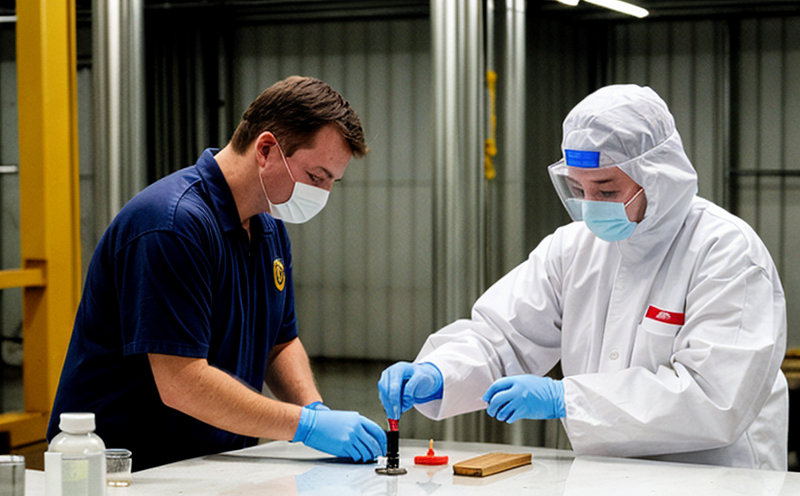ISO 22088-11 Freeze-Thaw Test
The ISO 22088 series of standards provides a framework for conducting environmental stress tests on packaging materials and components. The freeze-thaw test, specifically ISO 22088-11, is a crucial method used to evaluate the resistance of packaging materials to repeated freezing and thawing cycles, which are common in cold chain logistics.
This test simulates real-world conditions where materials may be repeatedly subjected to temperature fluctuations between low temperatures (typically below 0°C) and room temperature or higher. Such conditions can occur during transportation, storage, and handling of perishable goods, pharmaceuticals, and other sensitive products.
The freeze-thaw cycle is designed to stress the packaging material beyond its usual operating conditions, thereby revealing any weaknesses that could lead to leaks, breaches, or compromised integrity. This test is particularly important for ensuring the safety and quality of products in industries like food, pharmaceuticals, and chemicals.
To perform this test according to ISO 22088-11, the packaging material must be subjected to a series of freeze-thaw cycles under controlled conditions. The temperature range typically spans from -25°C to +35°C, with specific durations for each phase depending on the product and its intended use.
Before testing, it is essential to prepare the specimen correctly. This involves ensuring that the packaging material is representative of the actual product packaging used in commercial applications. The specimens should be conditioned to a specified humidity level and temperature before the test begins.
The freeze-thaw cycles are carried out in a controlled environment. During each cycle, the sample is first cooled to the low temperature for a specified duration, then quickly thawed at room temperature or higher. This process is repeated multiple times (usually 10-25 cycles), depending on the specific requirements of the test.
After completing all the freeze-thaw cycles, the packaging materials are visually inspected for any signs of damage, such as cracks, splits, or leaks. Additionally, integrity tests like pressure decay testing may be performed to quantify the extent of any potential breaches in the packaging integrity.
The results of the ISO 22088-11 freeze-thaw test are reported based on visual inspection and/or quantitative measurements from integrity tests. Compliance with the specified acceptance criteria ensures that the packaging materials meet the required standards for resistance to environmental stressors.
Understanding the nuances of this test is crucial for quality managers, compliance officers, R&D engineers, and procurement professionals involved in ensuring product safety and quality in cold chain logistics.
Why It Matters
The ISO 22088-11 freeze-thaw test is essential for several reasons. In the context of packaging testing, it ensures that materials used in cold chain logistics are robust enough to withstand the rigors of transportation and storage without compromising product integrity or safety.
By simulating real-world conditions, this test helps identify potential weaknesses in packaging design before they become critical issues during commercial operations. This proactive approach is vital for maintaining high standards of quality and compliance with international regulations.
For quality managers, the freeze-thaw test provides valuable insights into the performance of packaging materials under stress, enabling them to make informed decisions about material selection and process improvements. Compliance officers benefit from this test by ensuring that all packaging meets the necessary regulatory requirements.
R&D engineers can use the results of this test to refine their designs and optimize packaging for better resistance to environmental stresses. Procurement professionals gain confidence in selecting suppliers who provide materials capable of withstanding harsh conditions, thereby reducing the risk of product loss or damage.
Benefits
The primary benefit of conducting an ISO 22088-11 freeze-thaw test is enhanced assurance that packaging materials will perform reliably under real-world conditions. This reliability translates directly into increased product safety and quality, which are critical factors for businesses in the food, pharmaceutical, and chemical industries.
By identifying potential weaknesses early in the development process, companies can address issues before they become significant problems, leading to reduced costs associated with rework or waste. Additionally, compliance with international standards like ISO 22088-11 helps businesses avoid regulatory penalties and maintain a positive reputation.
The freeze-thaw test also supports continuous improvement in packaging design and manufacturing processes. Engineers can use the insights gained from this test to innovate and develop new materials or methods that enhance performance even further.
Use Cases and Application Examples
| Industry Sector | Product Type | Test Parameters | Acceptance Criteria |
|---|---|---|---|
| Packaging Testing | Frozen Foods | -25°C to +35°C, 10-25 cycles | No visible damage or leaks after testing |
| Pharmaceuticals | Biological Therapies | -25°C to +35°C, 15 cycles | No significant changes in integrity as measured by pressure decay testing |
| Chemicals | Stable Organic Compounds | -20°C to +40°C, 25 cycles | No visible damage or leaks after testing |
The freeze-thaw test is widely used across various industries where temperature stability is critical. For instance, in the frozen food sector, this test ensures that packaging can withstand repeated freezing and thawing without compromising product quality. In the pharmaceutical industry, it helps verify that containers for biological therapies can maintain their integrity under extreme conditions.
In the chemicals sector, the freeze-thaw test is essential for ensuring that containers used to store stable organic compounds remain leakproof and intact even after exposure to freezing temperatures. These real-world applications underscore the importance of this testing method in maintaining product safety and quality.





